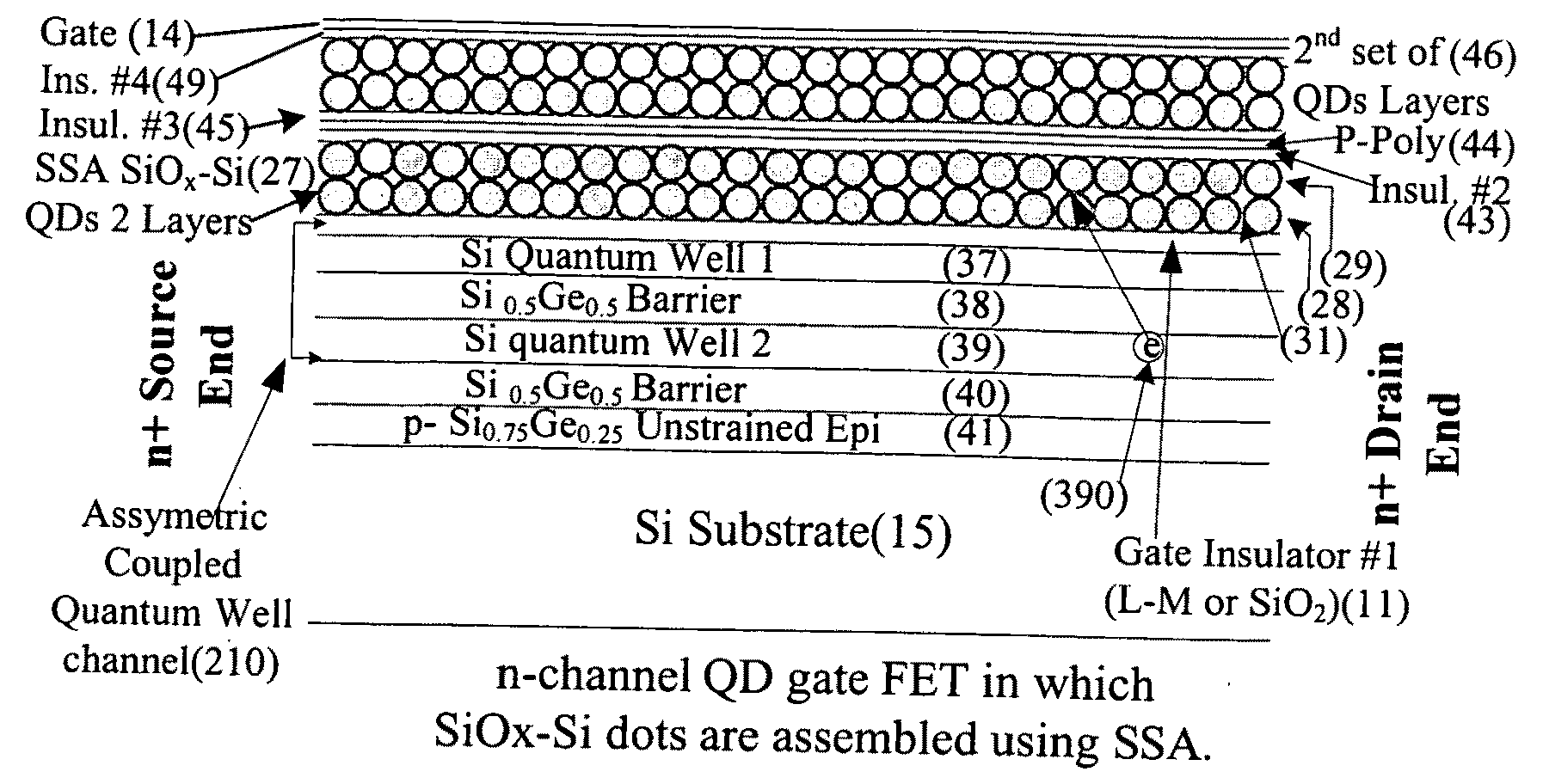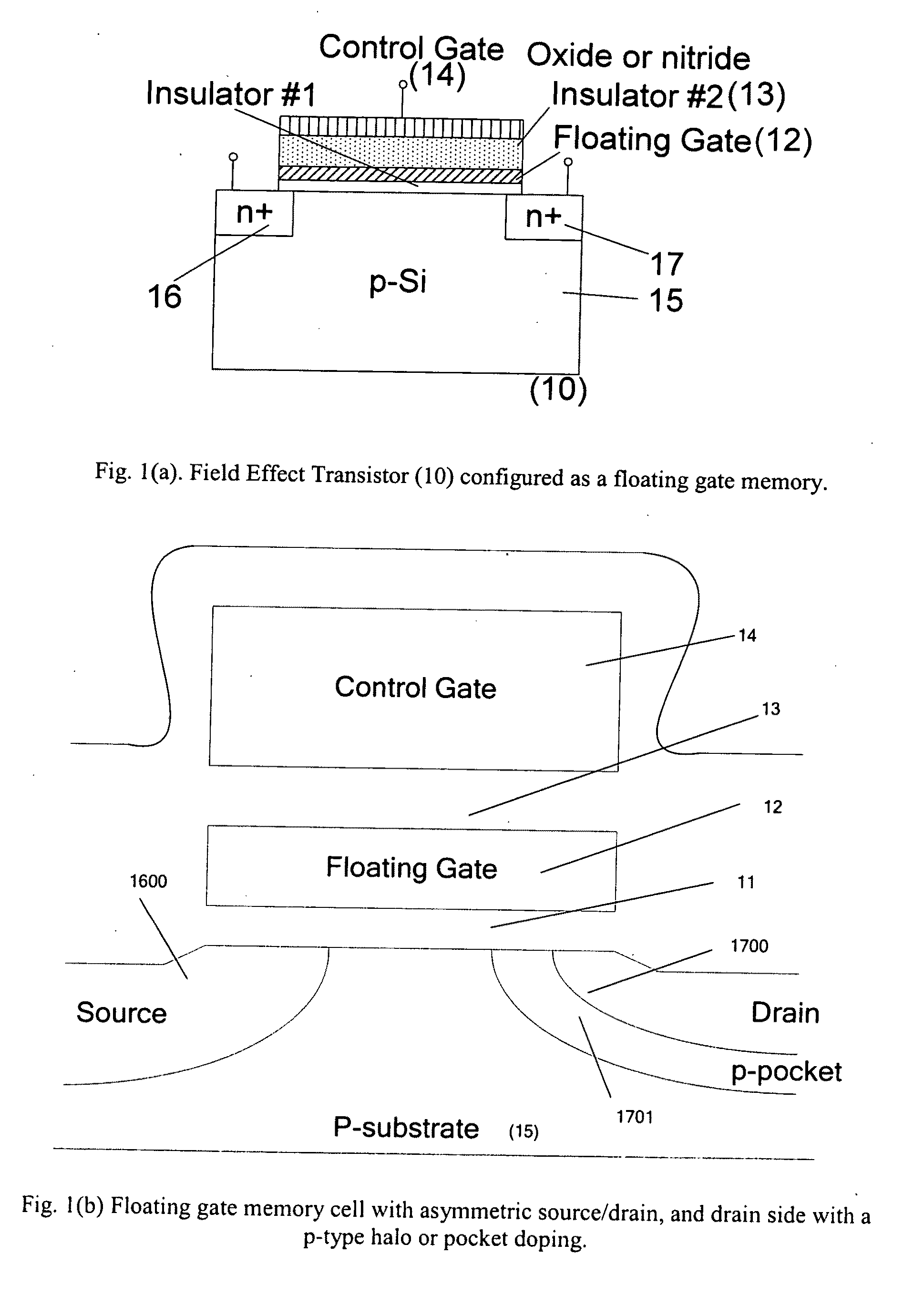Nonvolatile memory and three-state FETs using cladded quantum dot gate structure
a quantum dot gate structure, non-volatile memory technology, applied in transistors, solid-state devices, instruments, etc., can solve the problems of small control over the location of si nanoparticles in the gate, the size of the gate, and the separation between, and the problem of dot size variation inherent in conventional fabrication techniques
- Summary
- Abstract
- Description
- Claims
- Application Information
AI Technical Summary
Benefits of technology
Problems solved by technology
Method used
Image
Examples
Embodiment Construction
[0034]FIG. 1(a). shows Cross-sectional schematic of a conventional floating gate nonvolatile memory. Here the Si field-effect transistor (FET) has two gates. The first gate is the floating gate (12), which is deposited on a thin insulator layer (11), and holding the desired charge determining the state of the memory [0 or 1], and the second gate (14) serves as the control gate which is separated by an insulator layer (13) for the memory. The source (16) and drain (17) regions are shown as n+ regions in p-Si substrate (15). The control gate could be simple metal layer (14) or appropriately doped poly-Si layer (not shown here) with the metal contact layer.
[0035]FIG. 1(b) shows floating gate memory with asymmetric source (1600) and drain (1700) regions. The drain side is shown with a p-pocket or p-type halo doping (1701) to tailor the drain characteristics of the FET.
[0036]FIG. 1(c-1 to c-3). NOR cell architecture showing ‘Read’ in FIG. 1c-1; Write in FIG. 1c-2; and ‘Erase’ in FIG. 1c-...
PUM
 Login to View More
Login to View More Abstract
Description
Claims
Application Information
 Login to View More
Login to View More - R&D
- Intellectual Property
- Life Sciences
- Materials
- Tech Scout
- Unparalleled Data Quality
- Higher Quality Content
- 60% Fewer Hallucinations
Browse by: Latest US Patents, China's latest patents, Technical Efficacy Thesaurus, Application Domain, Technology Topic, Popular Technical Reports.
© 2025 PatSnap. All rights reserved.Legal|Privacy policy|Modern Slavery Act Transparency Statement|Sitemap|About US| Contact US: help@patsnap.com



